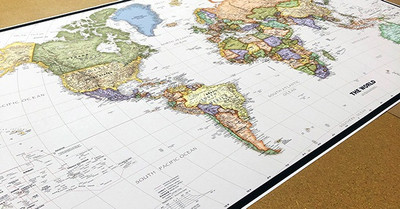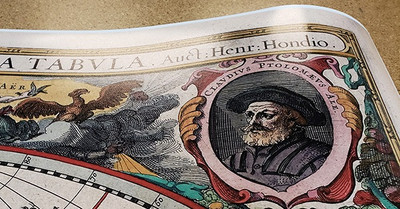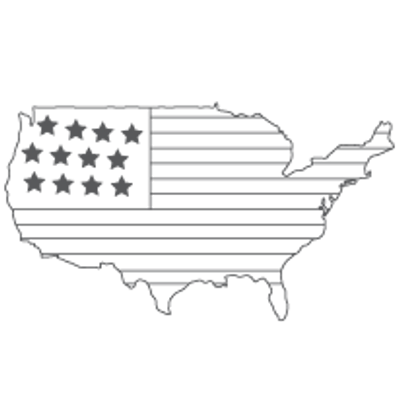
Historic Railroad Map of Minnesota - 1874
Description
The Minnesota Territory was designated in 1849 with St. Paul named as its capital. By 1850, St. Paul contained 257 families and held a population of 1,294.
While the region had been inhabited by Native Americans for thousands of years, the city of Milwaukee can be traced back to a series of trading posts established by French fur-trader, Jacques Vieau, in 1795. Solomon Juneau purchased the trading post that Vieau had established at the mouth of the Milwaukee River in 1820.
During the 1830's, three settlements emerged around this portion of the river, one being a settlement called Juneautown, founded by Solomon Juneau and his new partner, Green Bay lawyer Morgan Martin, who purchased 160 acres of land between Lake Michigan and the Milwaukee River. Land west of the Milwaukee River was purchased by Byron Kilbourn, who founded the settlement of Kilbourntown. South of these two settlements, the town of Walker's Point was founded by George H. Walker in 1835. The three settlements engaged in fierce competition to attract residents and grow their towns. When the Wisconsin State Legislature ordered the construction of a bridge over the Milwaukee River in 1840, it was to Juneautown's advantage. In 1845, Byron Kilbourn destroyed a portion of the bridge. This began what is known as the "Milwaukee Bridge War" which resulted in the injury of several persons involved in skirmishes. On January 31, 1846 the three settlements merged into the incorporated city of Milwaukee, with Solomon Juneau elected mayor. The new city was now the largest in the territory, with a population of about 10,000.
In 1858, Minnesota was made the thirty-second state, with St. Paul as capital. St. Paul grew quickly from that point with increased farming and manufacturing opportunities, and improved railroad facilities.
Copper began to be mined in the area of Duluth, and then iron ore. An extension of the Lake Superior & Mississippi Railroad from St. Paul was added in the late 1860's. This railroad line enabled Duluth to transport the region’s iron ore and cut timber more easily and the town prospered greatly because of it.
Brainerd was founded along the Mississippi River in the 1870's when a railroad junction was planned at that location. The Northern Pacific Railway maintained railroad machine and car shops at Brainerd.
In 1874 the legislature moved to alter Ramsey and Dakota county lines and incorporate West St. Paul. Bridge toll fees were removed at that time. Twenty million bushels of wheat were then being marketed annually through St. Paul.
Materials
Archival Paper

Premium fine art paper that provides accurate color reproduction with high-contrast, high-resolution print output and maximum image permanence. A high-quality print ready for framing.
More
- Museum quality paper for high-quality fine art.
- Ultra smooth, neutral white matte finish.
- Heavy-weight 230 gsm, 9.5 mil thickness.
- Printed with pigment inks for longer print life and enhanced fade resistance.
- Pigment based Canon LUCIA inks provide smooth tones and rich colors in fine, precise detail.
Luster Photo Paper

A premium semi-gloss photo paper with a subtle texture that produces a vivid, richly detailed print. This material results in an exquisitely detailed giclee print of substantially higher quality than a standard poster.
More
- Printed on 10 mil premium luster photo paper resulting in a brilliant, colorful image with a vivid life-like quality.
- Pigment based Canon LUCIA inks provide smooth tones and rich colors in fine, precise detail.
- Inks have a lightfastness rating of over 100 years, guaranteeing minimal noticeable fading over a very long period of time.
- Printed using very high resolution source files.
- Giclee printing is superior to traditional lithography in a number of ways: colors are brighter, lasts longer, and is a higher resolution.
Canvas on Wood Rails

A canvas giclee print is mounted to wooden hanging rails placed along the top and bottom of the map. Ready to hang on the wall using the attached hanging cord. Wood rails feature a natural finish.
More
- Premium 19 mil canvas material.
- Wood rails are 1 1/8" wide, round front.
- USA sourced solid maple wood.
- High quality giclee fine art print with a lightfastness rating of over 100 years.
- Pigment based Canon LUCIA inks provide smooth tones and rich colors in fine, precise detail.
Canvas Gallery Wrap

A high quality canvas giclee print is hand stretched over a sturdy wood frame. Printed on demand and handcrafted in Seattle, WA. The canvas gallery wrap serves as a stunning piece of art ready to hang on your wall.
More
- Premium 19 mil canvas material.
- Pigment based Canon LUCIA inks provide smooth tones and rich colors in fine, precise detail.
- High quality giclee fine art print with a lightfastness rating of over 100 years.
- Durable canvas mounted to a 1" deep wood frame.
- Ready to hang with included easy-to-use hanging kit.
Framed Map Print - Black Finish

Our gallery quality frames are made of solid wood and feature optical-grade acrylic. Each framed map is printed on premium archival matte fine art paper.
More
- Printed on thick, luxurious acid-free fine art paper & dry-mounted to foam board.
- Pigment inks ensure a vivid print with amazing colors and excellent fade resistance.
- Solid wood frame with a black finish has a 1.25" face & 7/8" depth.
- Kraft paper protective backing & hanging wire installed.
Framed Map Print - Natural Oak Finish

Our gallery quality frames are made of solid wood and feature optical-grade acrylic. Each framed map is printed on premium archival matte fine art paper.
More
- Printed on thick, luxurious acid-free fine art paper & dry-mounted to foam board.
- Pigment inks ensure a vivid print with amazing colors and excellent fade resistance.
- Solid wood frame with a natural oak finish has a 1.25" face & 7/8" depth.
- Kraft paper protective backing & hanging wire installed.

Made In The USA

School Purchase Orders









